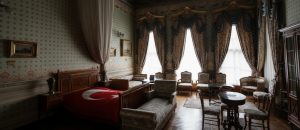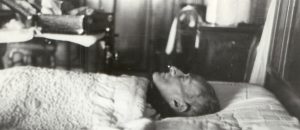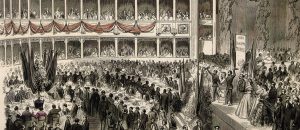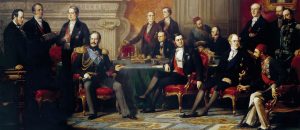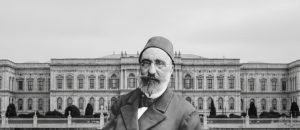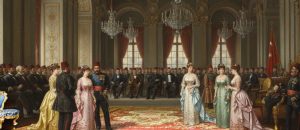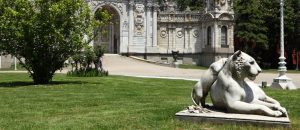Mustafa Kemal Atatürk’s use of Dolmabahçe Palace as the Presidential residence in Istanbul is the most powerful symbolic act demonstrating how the young Republic of Turkey claimed the legacy of the Ottoman Empire and transformed it. Instead of rejecting this most magnificent symbol of the Sultanate, Atatürk adopted it and turned a Sultan’s chamber into the working office of the Nation’s Leader, thereby making the palace the heart of the Republic. During his era, Dolmabahçe was not merely an accommodation site, but also a headquarters where the most crucial national projects, such as language and history, were managed, a diplomacy center where foreign statesmen were hosted, and most importantly, a living testament to how an imperial palace could be transformed into a “nation’s house”. [Link: Atatürk and the Legacy of the Republic -> /learn/ataturks-legacy-in-the-palace]
Claiming Instead of Rejecting: A Strategic Choice
After the declaration of the Republic, what would become of Dolmabahçe Palace was an important question. Some might have thought that this structure should be seen as a “symbol of the sultanate and collapse” and ignored. However, Atatürk pursued the exact opposite strategy. He knew that ignoring this most significant venue of a 600-year-old state tradition and memory would leave the new state without roots. His strategy was founded not upon “rejecting,” but upon “reinterpreting”. By using Dolmabahçe, he was declaring to the whole world that the Republic was not a void resulting from the dissolution of the Ottoman Empire, but rather the sole and legitimate heir to that great historical legacy. The new President residing in the Sultan’s palace was the strongest proof of continuity in state tradition.
More Than a Palace: The Republic’s Working Office
Atatürk never viewed Dolmabahçe Palace merely as a summer location where he rested or vacationed. During his time in Istanbul, the palace, much like the Çankaya Presidential Residence in Ankara, transformed into an active working center where the state’s most crucial affairs were managed.
- Headquarters of the Language and History Revolutions: Some of the most important studies on Turkish Language and History were conducted here. The First Turkish Language Congress (Birinci Türk Dil Kurultayı), convened in 1932, was held in the Ceremonial Hall (Muayede Salonu) of Dolmabahçe Palace. [Link: Where once bayram greetings ceremonies were held -> /sini-yerine-balo-salonu-dolmahcenin-mimarisinin-yuzyillik-saray-torenlerini-nasil-degistirdi] That hall now hosted a scientific forum where a nation rebuilt its language and identity.
- Center for Economic and Industrial Initiatives: Important meetings related to Turkey’s development initiatives, such as the First Industrial Plan, and discussions with foreign experts were held here.
- The Birth of Cultural Projects: The initial ideas for cultural projects, such as the establishment of the state opera and ballet, were discussed within these walls.
Atatürk had transformed the rooms used by the Sultans into “thought laboratories” where the future of the new Republic was planned.
The Republic’s Showcase: The New Stage of Modern Diplomacy
Atatürk was aware [Link: of Dolmabahçe’s historical diplomatic role -> /elciler-ve-imparatorlar-dolmahce-sarayinda-bir-devlet-ziyareti-protokolu-nasil-islerdi] and actively used this role for Republican diplomacy. By hosting foreign heads of state, kings, and important statesmen at Dolmabahçe, he showcased the strength, elegance, and self-confidence of the new Turkey.
- King Amanullah Khan of Afghanistan (1928)
- Shah Reza Pahlavi of Iran (1934)
- King Edward VIII of England (1936)
Visits by important leaders such as those listed above once again made Dolmabahçe one of the important stages of international politics. However, this time the owner of the stage was not a Sultan, but a President, and the message was that of a modern and independent nation-state, “first among equals”. [Link: Diplomatic visits during the Republican era -> /cumhuriyetin-vitrini-de-gaulleden-saha-dolmahcenin-modern-turkiyenin-diplomasisindeki-yeri] would consolidate this new role.
A Bridge from Empire to Nation
In conclusion, Mustafa Kemal Atatürk performed a revolution simply by using Dolmabahçe Palace [Conclusion paragraph]. By transforming this greatest symbol of the Sultanate into the administration, culture, and diplomacy center of the young Republic, he established an unbreakable bridge between the imperial legacy and the republican revolutions [Conclusion paragraph]. By turning the Sultan’s chamber into a working office, the ceremonial hall into a scientific congress center, and the reception rooms into a stage for modern diplomacy, he elevated Dolmabahçe beyond being a “palace” and transformed it into a “nation’s house” [Conclusion paragraph]. This is the most brilliant historical example of re-conquering a space and giving it a new spirit [Conclusion paragraph].








